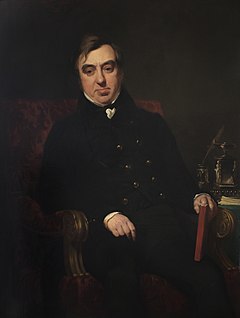
John Ayrton Paris, FRS (7 August 1785 – 24 December 1856) was a British physician. He is a possible inventor of the thaumatrope, which he published with W. Phillips in April 1825.

John Ayrton Paris, FRS (7 August 1785 – 24 December 1856) was a British physician. He is a possible inventor of the thaumatrope, which he published with W. Phillips in April 1825.
Paris made one of the earliest observations of occupational causes of cancer when, in 1822, he recognised that their exposure to arsenic fumes might be contributing to the unusually high rate of scrotal skin cancer among men working in copper-smelting in Cornwall and Wales. He also wrote about the accidents caused by the use of explosives in mines, and gave lectures to the Royal Geological Society of Cornwall on chemistry as well as serving as the society's first secretary. He was elected president of the Royal College of Physicians in 1844, an office he held until his death. He was elected a Fellow of the Royal Society in June 1821. He was an advocate of the use of scientifically assessed herbal preparations in medical treatment.
The exact date of Paris's birth is uncertain but has been noted as 7 August 1785, as is its location: some sources list him as born in Cambridge, others as born in Edinburgh, a city with which he certainly had some links. b
He wrote a number of substantial medical books, including Medical Jurisprudence (co-authored; 1823), a Pharmacologia which first appeared in 1820 and went through numerous editions, Elements of Medical Chemistry (1825) and a Treatise on Diet (1826). He also produced memoirs of other physicians for the Royal College, and Davy's first biography, The Life of Sir Humphry Davy (1831).
Around 1824[citation needed] Paris wrote Philosophy in Sport made Science in Earnest: Being an Attempt to Implant in the Young Mind the First Principles of Natural Philosophy by the Aid of the Popular Toys and Sports of Youth. It was first published anonymously in 1827, but posthumous editions were credited to Paris. It showed how to use simple devices to demonstrate scientific principles.